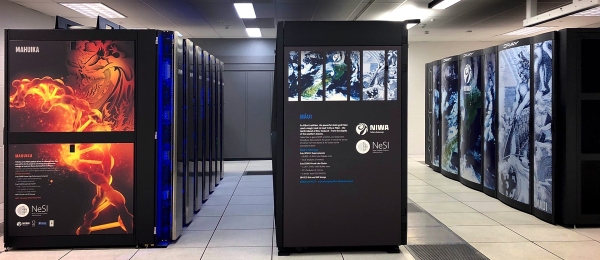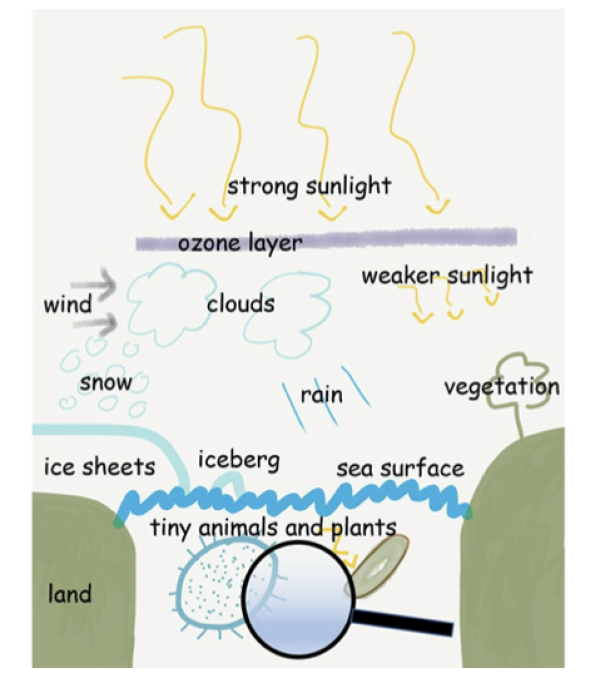Written by Jonny Williams, NIWA Climate Scientist
(This lesson is based on this article of the same name in Frontiers for Young Minds).
On this page:
- What is climate modelling?
- How do we create a climate model?
- Video – climate modelling
- Activity – become a climate modeller
- Quiz – computing the climate
Download a shorter version of this lesson in PowerPoint or as a PDF [981 KB] or continue below to see the lesson in full.
Around the world the impacts of climate change are already being felt, with many calling this a time of climate crisis.
Some of the impacts are already clear, for example, people living close to coastlines may have to move due to sea-level rise. We will have to work together in our communities to understand how climate change will impact us and to try to minimise its effects on the natural world. We can explore how the world may change due to climate change by creating climate models.
In this lesson we will explore how and why we use computers to build models of the climate. You can help us experiment with climate models too.
What is climate modelling?
By plugging lots of complex equations into a computer, scientists can build models of the what the climate may look like years into the future.
The calculations in the models can be performed many times over to test different ideas about how we think the climate may change. Each of these different tests of a climate model are called simulations.
You can think of a climate model like a computer game and each time you play the game, you are generating a new simulation. Put another way, simulations are the results of models!

We use powerful computers called supercomputers to create climate models.
These computers are not really that different to the ones that you might have at home or school. The main difference is they’re just a lot bigger and can do calculations a lot faster.
How do we create a climate model?
Because we are interested in many aspects of the climate, not just the air, we include many different natural processes in our computer models. Climate models use equations to represent how all of these different aspects interact together to drive the Earth’s climate. Some of these processes are shown in the picture below:
You can see in the picture that there are many processes in the natural world which are included in our models. Let’s look at the different pieces of the models in turn:
The air:
- Clouds
- Rain
- Snow
- Wind
- A layer of ozone gas (a type of oxygen) which protects us from harmful rays from the sun
The sea:
- Icebergs
- Tiny animals and plants that live in the sea called plankton
The land:
- Vegetation (trees and plants)
- Ice sheets
When we create a climate model we include all of these processes in our calculations so that we can get an idea of how they may change in the future and how the climate may change overall. We can also get an idea of how these processes affect each other.
These models allow us to test different scenarios – like warmer atmospheric temperatures or more acidic oceans – to see what impact these changes may have on the climate and the natural world.
For example, increasing air temperatures over the South Pole may cause the ice on land there (called an ice sheet) to melt, changing the habitats of the fish, birds and mammals that live there.
Climate models also allow us to test “What if?” scenarios and plan for the future. For example, if we predict it will rain less in a particular area, then that area may not be suitable for growing crops. Or if we predict that sea-levels will rise significantly, towns and houses near the ocean will be at risk and may have to be moved.
Video – climate modelling
Have a look at this video about climate modelling from NIWA climate scientist Dr Suzanne Rosier:
Activity – become a climate modeller
If you have access to a computer you can be a climate modeller!
What you’ll need:
- A computer
- Access to the internet
Instructions:
Visit www.climateprediction.net to get started. You can download a piece of software on to your computer and run a climate model experiment yourself. It’s very easy to set up and is completely free. You might even be able to do this at school but ask your teacher first!
The results from the different simulations run on the website, by people like you, are used by scientists all over the world to research how the climate is changing.
There is even a special project going on to investigate the future weather of Australia and New Zealand.
You can see the results that your climate model is producing live as it runs, like this next picture. Give it a go and create your own climate model.
Quiz – computing the climate
Check out our computing the climate quiz. The quiz works best on Kahoot, but if you prefer a text version, you can download it as a PDF.
Climate change information for climate solvers
For more information about the science of climate change, visit our web pages aimed at school students. The things we can do to combat climate change, individually, and alongside our whānau, school and community, can and will make a difference.



